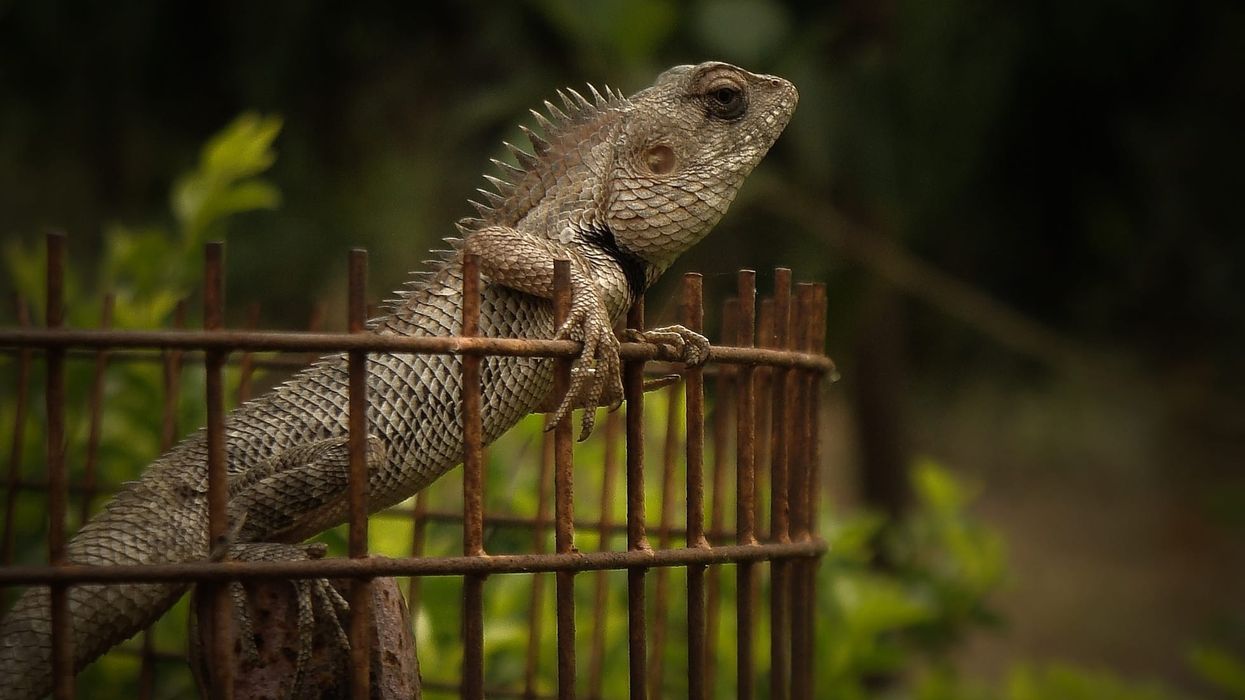Just spotted a beautiful orange butterfly with black spots in the United States? Chances are you've seen the California Tortoiseshell (Nymphalis californica), which is a butterfly that belongs to the family Nymphalidae. The wings of the adults are orange and show black spots when opened.
When close, the underside is visible, which looks like a dead leaf, and has a mottled brown and grayish coloration. The forelegs of males are hairier than those of females.
The wingspan ranges between 1.2- 2.7 in (3.2 - 7 cm). The California tortoiseshell butterfly caterpillars (larvae of butterflies) are quite small and have a spiny, black-colored body. The pupa of this butterfly has a gray-violet coloration, that looks similar to a leaf.
This butterfly is native to California and can be seen in various regions of the United States. It is prevalent in Baja California Norte, Colorado, British Colombia, Montana, New Mexico, and Wyoming.
It also occurs in Pennsylvania, Michigan, Vermont, as well as New York, but rarely. These charming creatures can be seen near Chapparal growth, woodland, brush areas, clearings, and forest edges.
The host plant of the adult butterflies are the Manzanita flowers and that of the caterpillars are several species of wild lilac (Ceanothus). Species of Ceanothus serve as larval food plants whereas flower nectar, fruit, mud, and sap are consumed by adults.
The female adults lay their eggs on the undersides of leaves, which hatch within four to five days. The flight pattern is irregular but fast.
Want to know more about this butterfly? Keep reading to get to know more about its wings, migration, caterpillars, larvae, and more!
If you enjoyed reading our California tortoiseshell butterfly facts, you'll love our purple emperor butterfly and morpho butterfly articles too!
California Tortoiseshell Butterfly Interesting Facts
What type of animal is a California tortoiseshell butterfly?
The California tortoiseshell (Nymphalis californica) is a butterfly that can be spotted commonly in North America. It is a magnificent butterfly whose wings have an orange-brown upperside with dark borders and black spots, and a dark mottled brown underside that is similar to a dead leaf.
What class of animal does a California tortoiseshell butterfly belong to?
The California tortoiseshell (Nymphalis californica) belongs to the class Insecta. It is a member of the family Nymphalidae and the subfamily Nymphalinae.
How many California tortoiseshell butterflies are there in the world?
The population of California tortoiseshells has not been evaluated yet. However, their population is secure presently.
It is rare in some regions of its distribution, mainly because it lives on a bust and boom cycle. This species of butterfly is known to have population explosions in the summer season.
There might occur thousands of these butterflies in the summer season in a particular year, but then suddenly their numbers will disappear, with them not occurring for a few years. These population explosions cause the migration of California tortoiseshells to different regions, mainly towards the north.
Where does a California tortoiseshell butterfly live?
This butterfly is found in North America. This beautiful creature is prevalent in Baja California Norte, Colorado, British Colombia, Montana, New Mexico, and Wyoming. It also occurs rarely in parts of its range, like in Pennsylvania, Michigan, Vermont, as well as New York due to population explosions in Mexico. It is endemic to North America.
What is a California tortoiseshell butterfly's habitat?
This species can be seen near Chapparal growth, woodland, brush areas, clearings, and forest edges. The host plant of the adult butterflies are the Manzanita flowers and that of the caterpillars are several species of wild lilac (Ceanothus).
They can also be seen commonly in urban areas like parks and yards in the summer season.
They go through population explosions cause the migration of California tortoiseshells to different regions, mainly towards the north. Adult butterflies come out at the end of May or early June and have been observed to emigrate immediately.
Who do California tortoiseshell butterflies live with?
Adult California tortoiseshells butterflies can be seen in small groups or in pairs. They have also been observed to fly in large swarms.
How long does a California tortoiseshell butterfly live?
The adult California tortoiseshell (Nymphalis californica) can live for nine to ten months.
How do they reproduce?
Male California tortoiseshells have been observed to perch at branches in the middle of the day, waiting for females. The breeding sites of these butterflies vary every year. They hibernate as an adult.
The female California tortoiseshells lay eggs on the underside of leaves in bunches. They prefer to lay their eggs on an aromatic bush like the snow bush. They hatch within four to five days.
The development is rapid at specific temperatures with pupation being 25-27 days long. Adult California tortoiseshells emerge from the pupae after 6-11 days, five weeks after the eggs were laid. The caterpillars feed upon leaves.
What is their conservation status?
California tortoiseshells have not been evaluated by the IUCN yet.
California Tortoiseshell Butterfly Fun Facts
What do California tortoiseshell butterflies look like?
California tortoiseshell butterflies are magnificent creatures that have a dual appearance. The upper side of their wings is visible when they open their wings.
The coloration on top is orange and there are big black spots present. When they close their wings, the underside is visible which looks similar to a dead lead as it has a mottled brown and grayish appearance. The forelegs of males are hairier than those of females.
This species of butterfly exhibits sexual dimorphism. The larval form (caterpillar) has a black coloration with a white stripe on its back and a blue hue at the black spine's base.
How cute are they?
California tortoiseshell butterflies are very cute little creatures that have beautiful orange-colored wings. These can be seen in the summers in parks, gardens, urban areas, and even in backyards, making it very easy to enjoy their beauty.
How do they communicate?
It is not known how California tortoiseshell butterflies communicate. However, most butterflies communicate through signals which are produced by chemical reactions.
How big is a California tortoiseshell butterfly?
The wings of the adult butterflies range between 1.2- 2.7 inches (3.2 - 7 cm) in length which is similar to that of the cabbage white butterfly!
How fast can a California tortoiseshell butterfly fly?
The flight pattern of these magnificent butterflies is irregular but fast. Their speed has not been evaluated yet. However, butterflies can fly really fast with the skippers gaining a speed of 20 mph (30 kph). They also migrate north and take multiple flights in a year. Overwintering adult California tortoiseshells fly from April to June (during the summer season).
How much does a California tortoiseshell butterfly weigh?
Common butterflies weigh about 0.017-0.019 oz (0.50-0.55 g).
What are the male and female names of the species?
These butterflies do not have specific names based on sex.
What would you call a baby California tortoiseshell butterfly?
The baby of these butterflies is referred to as larva/caterpillar.
What do they eat?
Species of Ceanothus serve as larval food plants whereas flower nectar, fruit, mud, and sap are consumed by the adults. Ravens commonly prey upon California tortoiseshells when these butterflies are going through their population explosions.
Are they dangerous?
Butterflies are sweet little creatures that are harmless in nature. All butterflies mind their own business and do not like to get into any trouble with other animal species.
Would they make a good pet?
Butterflies can be good pets. However, their lifespan is very short and they cannot be trained. They love flying around and mustn't be trapped in a cage.
Did you know...
Butterflies symbolize courage, hope, and change!
This species of butterfly is known to have population explosions in the summer season. There might occur thousands of these butterflies in the summer season in a particular year, but then suddenly their numbers will disappear, with them not occurring for a few years.
Why are small tortoiseshell butterflies endangered?
The population of the small tortoiseshell butterflies keeps fluctuating. The increasing population of the Sturmia Bella is believed to be the cause. Climate change and pollution are also major factors that have caused a drop in their population.
How long do small tortoiseshell butterflies pupate?
Small tortoiseshell butterflies pupate for about four weeks. The duration is determined by the temperature.
Here at Kidadl, we have carefully created lots of interesting family-friendly animal facts for everyone to discover! Learn more about some other arthropods from our ground beetle surprising facts and earwig facts for kids pages!
You can even occupy yourself at home by coloring in one of our free printable California tortoiseshell butterfly coloring pages!










